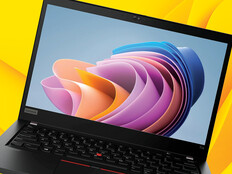Four Agencies Describe How Mobility Begets Big Data
John Edgar, vice president of information technology at the United States Postal Service (USPS), knows that the recipe for his agency's transformation includes a generous portion of Big Data analytics — and among the freshest new ingredients is data collected in the field.
"We have to become more data-driven to improve operations," Edgar says. "Utilizing data properly will lead to greater efficiency, reduced costs and additional services."
Edgar wants to amass a pantry full of data, broad enough to support predictive analytics, optimize delivery routes, identify gaps in USPS offerings and enhance customer service. To do so, and because of the business it's in, the Postal Service must be able to extract data from its carriers and feed that data into USPS databases for real-time analysis. It also needs to pull in information from mail processing operations and logistics. In short, it needs more mobile computing.
"We're in our infancy in modern, mobile device implementation," Edgar admits. But the agency is making strides.
Last year, USPS equipped carriers with more than 100,000 cellphones, paired to legacy scanners, so that package delivery information could be uploaded right away. Previously, such data couldn't be collected from the scanners until they were docked at the end of carriers' shifts. Now, data is transferred from the scanners to the cellphones via Bluetooth communication. Then the data is sent wirelessly to a central database and made available for package tracking within minutes.
That's just the start of the Postal Service's mobile vision, Edgar says. The vast majority of the 158 billion letters and parcels handled annually by the USPS now have unique barcodes. The agency aims to use the data behind those barcodes to support intelligent decision-making. For example, a mail-sorting facility could automatically receive an alert that a threshold volume of mail will be arriving at a certain day and time, allowing it to adequately staff shifts and free up sorting machines.
Edgar says he also plans to use mobile devices to optimize customer service. Using the GPS capabilities of a smartphone or tablet, an automated system could determine which carrier is closest to a customer requesting immediate pickup service. Applications could map out carrier routes each day based on delivery priority, location and volume, and then transmit that data to mobile devices.
"Having data from the field will allow us to adjust operations on the fly to meet customer demand," Edgar says.
Speeding Data Collection
Shawn McCarthy, research director at IDC Government Insights, says the Postal Service is not alone in trying to figure out how mixing mobile data and analytics can improve citizen services and cut operational costs.
"Mobile devices provide the ability to collect and share data rapidly for use in trend analysis and other critical projects," he says. "And they could streamline operations, allowing for a decent return on investment."
But collecting data via mobile devices is just one part of the equation; organizations must also devise plans for using that data. "A good starting point is to allow a mobile interface into existing applications," McCarthy says. Agencies should tweak their applications to recognize and accept the nuances of mobile data, including GPS and unstructured information, he adds.
Cynthia Barrigan, technology developer at the Telemedicine and Advanced Technology Research Center, part of the Army Medical Research and Material Command, is focused on using mobile data to enhance the performance of military personnel in health-related engagements around the world. She is developing and piloting a mobile application toolkit that, among other things, makes data collection and sharing more efficient.
600 The number of local residents a military health mini clinic typically sees in a single day
SOURCE: Army Telemedicine and Advanced Technology Research Center
"These events are a great test bed for mobile technologies," Barrigan says. "The toolkit offers all participants the ability to use mobile devices to perform their jobs and manage an event. Healthcare providers can improve data collection techniques and better document the health of the population to analyze and better target care."
Barrigan is currently testing some of the toolkit's capabilities in Honduras, where military medical personnel work alongside host nation healthcare providers to deliver public-health training and medical services.
"Just counting the number of patients seen is not enough," Barrigan says. "With these applications, we'll be able to document and track referrals and better understand how medical outreach contributes to the health status of that community."
The mobile toolkit runs on Apple iOS and Android platforms and is partially open-source. Using their mobile devices, care providers can enter data, including diagnoses and information about drugs they've distributed, and it is automatically transferred to a local database via Wi-Fi, eliminating the need for paper-based data entry. In addition to saving time, which is always in short supply on such missions, mobile data collection gives local governments the ability to analyze the needs of each geographic area.
Instant Data Validation
Although Barrigan's mobile project is cross-platform, Joshua Kumpf settled on Microsoft Surface Pro and Pro 2 tablets for his. Kumpf, a mobile technology specialist for the Infectious Disease Clinical Research Program (IDCRP), distributed ruggedized tablets to overseas bases for a joint U.S.-U.K. clinical study of deployed personnel.
IDCRP comprises a worldwide network of Defense Department clinical and research centers that collaborate to investigate infectious-disease challenges facing the military. Kumpf says that by mobilizing clinical studies — especially data entry — the program's findings are more robust. "Being able to take the tablets to where the participants are increases our geographical range and expands enrollment," he explains.
The tablets also support instant data validation. After researchers interview their subjects and capture data, that data is checked for missing or incorrect fields, which can resolve errors immediately. "With paper forms, data would be entered hours, days or even weeks after a subject had left," Kumpf says. "You hoped you got everything you needed and settled for unanswered queries."
Mobile entry helps reduce transcription errors and enables research coordinators to spend more time in the field capturing information. "Mobilization of the studies allows us to get better data faster, while making more efficient use of our doctor and research coordinator time," Kumpf notes.
Caregiver Apps at V.A.
At the Department of Veterans Affairs, mobile data collection and analysis are already paying off. In 2012, the agency distributed to caregivers 879 iPads, running a suite of VA-developed apps, as part of a pilot program to help care for disabled post-9/11 veterans living at home.
Caregivers use the tablets to upload patient vital signs and other medical data to their healthcare providers, who then access the data during a visit or call, with the goal of understanding what patients have experienced between visits.
"Through mobile technology, we are encouraging even closer relationships between veterans, their caregivers and their VA care teams," says Shawn Hardenbrook, director of the VA's Web and Mobile Solutions group.
Ultimately, Hardenbrook states, VA will achieve better patient-care outcomes based on the volume of data it collects through such programs. Although caregiver-generated data is now stored in a siloed database, the agency hopes to make better use of it through new decision-support and mobile-display tools.
"Providers get a more complete view of their patient, and the caregivers become more engaged and informed," Hardenbrook says.









